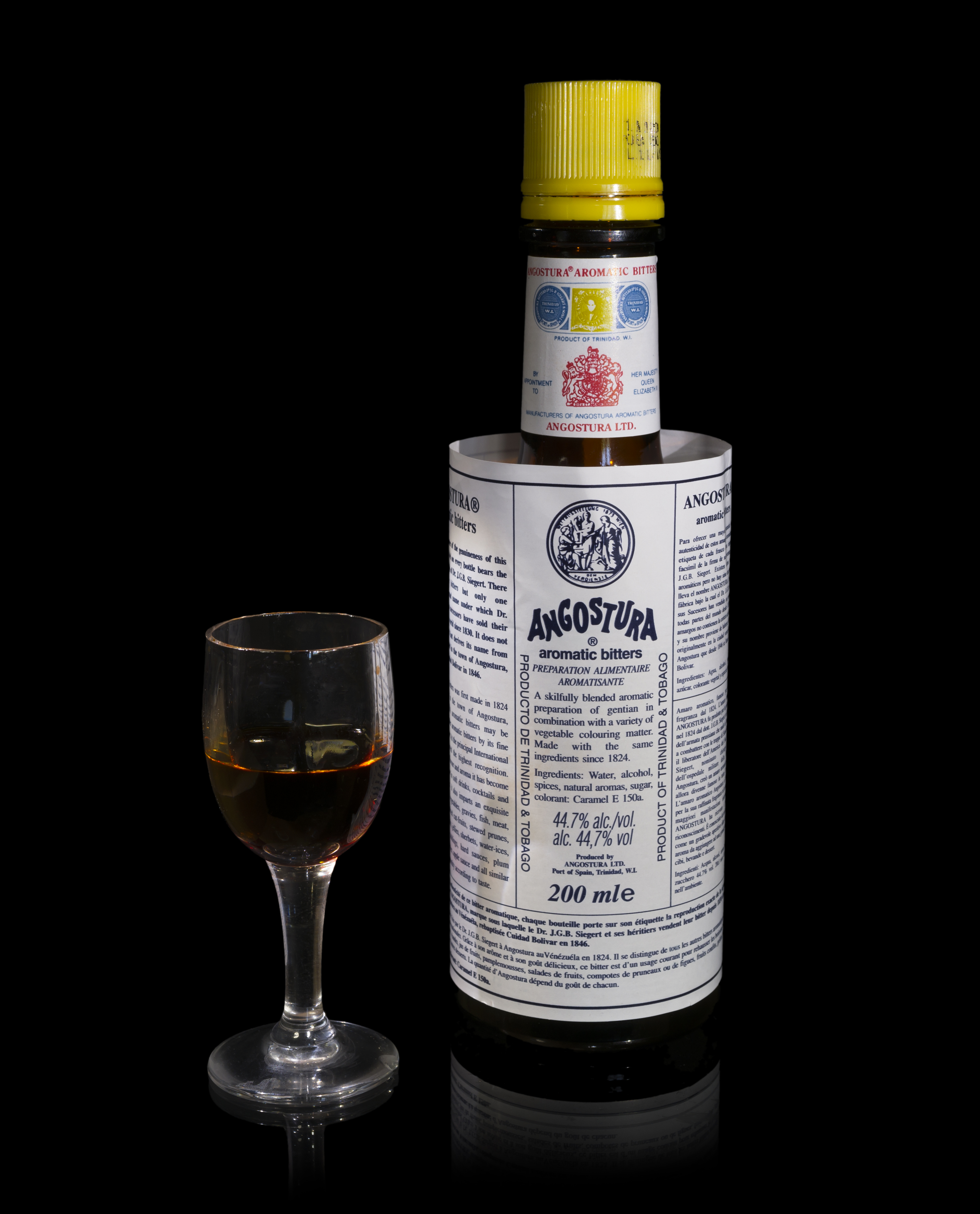|
Limet
Limet is a herbal bitters made in Karlovy Vary in the Czech Republic, flavored with anise seeds, cinnamon, various herbs, and a rich citrus flavor according to a recipe of the Becher family. It is normally served cold, and is often used as an aid to digestion. It can also be served with a tonic water, in which case it is known as a "beton". Its alcohol content is 38 percent (76 proof). The alcohol is based on the original Becherovka, similarly made from a secret mixture of different herbs. The makers of Limet, the company ''Jan Becher — Karlovarská Becherovka, a.s.'', date back almost 200 years to the first decade of the 19th century. In 1807, Josef Becher, a pharmacist from Karlovy Vary, started selling bitters Bitters (plural also ''bitters'') is traditionally an alcoholic preparation flavored with botanical matter for a bitter or bittersweet flavor. Originally, numerous longstanding brands of bitters were developed as patent medicines, but now a ... made to hi ... [...More Info...] [...Related Items...] OR: [Wikipedia] [Google] [Baidu] |
Becherovka
Becherovka (), formerly Karlsbader Becherbitter, is a herbal bitters, often drunk as a digestif. It is produced in Karlovy Vary, Czech Republic by the Jan Becher company. The brand is owned by Pernod Ricard. It is made from a secret recipe based on more than twenty types of herbs and spices. Becherovka is often described as having a gingery or cinnamon flavor. Its alcohol content is 38% ABV (76 proof), and it is usually served chilled. History The inventor of Becher Bitter was Josef Vitus Becher (1769–1840) from the city then known as Carlsbad, later spelled Karlsbad. Apart from trading in spices and colonial goods in his shop, "Dům U Tří skřivanů" ("House of the Three Woodlarks"), he also produced alcoholic beverages. In 1794, he rented a still-house and began to experiment with spirits. In 1805 Prince Maxmillian Friedrich von Plettenberg arrived in Carlsbad for medical treatment, accompanied by his personal physician, Dr. Christian Frobrig from England. Fr ... [...More Info...] [...Related Items...] OR: [Wikipedia] [Google] [Baidu] |
Bitters
Bitters (plural also ''bitters'') is traditionally an alcoholic preparation flavored with botanical matter for a bitter or bittersweet flavor. Originally, numerous longstanding brands of bitters were developed as patent medicines, but now are sold as digestifs, sometimes with herbal properties, and as cocktail flavorings. Since cocktails often contain sour and sweet flavors, bitters are used to engage another primary taste and thereby balance out the drink and make it more complex, giving it a more complete flavor profile. Ingredients The botanical ingredients used historically in preparing bitters have consisted of aromatic herbs, bark, roots, and/or fruit for their flavor and medicinal properties. Some of the more common ingredients are cascarilla, cassia (Chinese cinnamon), gentian, orange peel, and cinchona bark. Most bitters contain both water and alcohol, the latter of which functions as a solvent for botanical extracts as well as a preservative. The alcoholi ... [...More Info...] [...Related Items...] OR: [Wikipedia] [Google] [Baidu] |
Karlovy Vary
Karlovy Vary (; german: Karlsbad, formerly also spelled ''Carlsbad'' in English) is a spa city in the Karlovy Vary Region of the Czech Republic. It has about 46,000 inhabitants. It lies on the confluence of the rivers Ohře and Teplá. It is named after Charles IV, Holy Roman Emperor and the King of Bohemia, who founded the city. Karlovy Vary is the site of numerous hot springs (13 main springs, about 300 smaller springs, and the warm-water Teplá River), and is the most visited spa town in the Czech Republic. The historic city centre with the spa cultural landscape is well preserved and is protected by law as an urban monument reservation. It is the largest spa complex in Europe. In 2021, the city became part of the transnational UNESCO World Heritage Site under the name " Great Spa Towns of Europe" because of its spas and architecture from the 18th through 20th centuries. Administrative parts Karlovy Vary is made up of 15 city parts and villages: *Karlovy Vary *Bohati ... [...More Info...] [...Related Items...] OR: [Wikipedia] [Google] [Baidu] |
Czech Republic
The Czech Republic, or simply Czechia, is a landlocked country in Central Europe. Historically known as Bohemia, it is bordered by Austria to the south, Germany to the west, Poland to the northeast, and Slovakia to the southeast. The Czech Republic has a hilly landscape that covers an area of with a mostly temperate continental and oceanic climate. The capital and largest city is Prague; other major cities and urban areas include Brno, Ostrava, Plzeň and Liberec. The Duchy of Bohemia was founded in the late 9th century under Great Moravia. It was formally recognized as an Imperial State of the Holy Roman Empire in 1002 and became a kingdom in 1198. Following the Battle of Mohács in 1526, the whole Crown of Bohemia was gradually integrated into the Habsburg monarchy. The Protestant Bohemian Revolt led to the Thirty Years' War. After the Battle of White Mountain, the Habsburgs consolidated their rule. With the dissolution of the Holy Empire in 1806, the C ... [...More Info...] [...Related Items...] OR: [Wikipedia] [Google] [Baidu] |
Anise
Anise (; '), also called aniseed or rarely anix is a flowering plant in the family Apiaceae native to Eurasia. The flavor and aroma of its seeds have similarities with some other spices and herbs, such as star anise, fennel, licorice, and tarragon. It is widely cultivated and used to flavor food, candy, and alcoholic drinks, especially around the Mediterranean. Description Anise is an herbaceous annual plant growing to or more. The leaves at the base of the plant are simple, long and shallowly lobed, while leaves higher on the stems are feathery pinnate, divided into numerous small leaflets. The flowers are either white or yellow, approximately in diameter, produced in dense umbels. The fruit is an oblong dry schizocarp, long, usually called "aniseed".Anise (''Pimpinella anisum'' L.) from Gernot ... [...More Info...] [...Related Items...] OR: [Wikipedia] [Google] [Baidu] |
Cinnamon
Cinnamon is a spice obtained from the inner bark of several tree species from the genus '' Cinnamomum''. Cinnamon is used mainly as an aromatic condiment and flavouring additive in a wide variety of cuisines, sweet and savoury dishes, breakfast cereals, snack foods, bagels, teas, and traditional foods. The aroma and flavour of cinnamon derive from its essential oil and principal component, cinnamaldehyde, as well as numerous other constituents including eugenol. Cinnamon is the name for several species of trees and the commercial spice products that some of them produce. All are members of the genus ''Cinnamomum'' in the family Lauraceae. Only a few ''Cinnamomum'' species are grown commercially for spice. '' Cinnamomum verum'' (AKA ''C. zeylanicum''), known as "Ceylon cinnamon" after its origins in Sri Lanka (formerly Ceylon), is considered to be "true cinnamon", but most cinnamon in international commerce is derived from four other species, usually and more correctl ... [...More Info...] [...Related Items...] OR: [Wikipedia] [Google] [Baidu] |
Digestion
Digestion is the breakdown of large insoluble food molecules into small water-soluble food molecules so that they can be absorbed into the watery blood plasma. In certain organisms, these smaller substances are absorbed through the small intestine into the blood stream. Digestion is a form of catabolism that is often divided into two processes based on how food is broken down: mechanical and chemical digestion. The term mechanical digestion refers to the physical breakdown of large pieces of food into smaller pieces which can subsequently be accessed by digestive enzymes. Mechanical digestion takes place in the mouth through mastication and in the small intestine through segmentation contractions. In chemical digestion, enzymes break down food into the small molecules the body can use. In the human digestive system, food enters the mouth and mechanical digestion of the food starts by the action of mastication (chewing), a form of mechanical digestion, and the wetting contact o ... [...More Info...] [...Related Items...] OR: [Wikipedia] [Google] [Baidu] |
Tonic Water
Tonic water (or Indian tonic water) is a carbonated soft drink in which quinine is dissolved. Originally used as a prophylactic against malaria, tonic water usually has a significantly lower quinine content and is consumed for its distinctive bitter flavor, though nowadays it is often sweetened. It is frequently used in mixed drinks, particularly in gin and tonic. History As early as the 17th century the Spanish used quinine from the bark of Cinchona trees to treat malaria after being shown the remedy from the Indigenous peoples of Peru, Bolivia, and Ecuador. In early 19th century India and other tropical posts of the British Empire, medicinal quinine was recommended to British officials and soldiers to prevent malaria, where it was mixed with soda and sugar to mask its bitter taste, creating tonic water. The first commercial tonic water was produced in 1858 when it was patented by the owner of Pitt & Co., Erasmus Bond. The mixed drink gin and tonic also originated in B ... [...More Info...] [...Related Items...] OR: [Wikipedia] [Google] [Baidu] |
Bitters
Bitters (plural also ''bitters'') is traditionally an alcoholic preparation flavored with botanical matter for a bitter or bittersweet flavor. Originally, numerous longstanding brands of bitters were developed as patent medicines, but now are sold as digestifs, sometimes with herbal properties, and as cocktail flavorings. Since cocktails often contain sour and sweet flavors, bitters are used to engage another primary taste and thereby balance out the drink and make it more complex, giving it a more complete flavor profile. Ingredients The botanical ingredients used historically in preparing bitters have consisted of aromatic herbs, bark, roots, and/or fruit for their flavor and medicinal properties. Some of the more common ingredients are cascarilla, cassia (Chinese cinnamon), gentian, orange peel, and cinchona bark. Most bitters contain both water and alcohol, the latter of which functions as a solvent for botanical extracts as well as a preservative. The alcoholi ... [...More Info...] [...Related Items...] OR: [Wikipedia] [Google] [Baidu] |
Czech Brands
Czech may refer to: * Anything from or related to the Czech Republic, a country in Europe ** Czech language ** Czechs, the people of the area ** Czech culture ** Czech cuisine * One of three mythical brothers, Lech, Czech, and Rus' Places * Czech, Łódź Voivodeship, Poland * Czechville, Wisconsin, unincorporated community, United States People * Bronisław Czech (1908–1944), Polish sportsman and artist * Danuta Czech (1922–2004), Polish Holocaust historian * Hermann Czech (born 1936), Austrian architect * Mirosław Czech (born 1968), Polish politician and journalist of Ukrainian origin * Zbigniew Czech (born 1970), Polish diplomat See also * Čech, a surname * Czech lands * Czechoslovakia * List of Czechs * * * Czechoslovak (other) * Czech Republic (other) * Czechia (other) Czechia is the official short form name of the Czech Republic. Czechia may also refer to: * Historical Czech lands * Czechoslovakia (1918–1993) *Czech Socialist ... [...More Info...] [...Related Items...] OR: [Wikipedia] [Google] [Baidu] |
Czech Cuisine
Czech cuisine ( cs, česká kuchyně) has both influenced and been influenced by the cuisines of surrounding countries and nations. Many of the cakes and pastries that are popular in Central Europe originated within the Czech lands. Contemporary Czech cuisine is more meat-based than in previous periods; the current abundance of farmable meat has enriched its presence in regional cuisine. Traditionally, meat has been reserved for once-weekly consumption, typically on weekends. The body of Czech meals typically consists of two or more courses; the first course is traditionally soup, the second course is the main dish, and the third course can include supplementary courses, such as dessert or compote ('). In the Czech cuisine, thick soups and many kinds of sauces, both based on stewed or cooked vegetables and meats, often with cream, as well as baked meats with natural sauces ( gravies), are popular dishes usually accompanied with beer, especially Pilsner, that Czechs consu ... [...More Info...] [...Related Items...] OR: [Wikipedia] [Google] [Baidu] |

.jpg)




